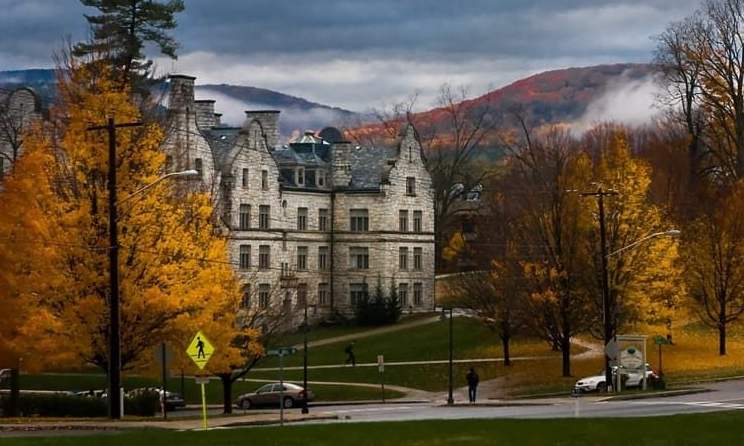Liberal arts colleges and universities are two popular options for post-secondary education, but they are very different in terms of their focus, academic offerings, and campus life. When considering which type of institution is right for you, it’s important to understand the key differences between liberal arts colleges and universities.
difference between liberal arts college and university
- Curriculum: Liberal arts colleges offer a broad curriculum that emphasizes the development of critical thinking, problem-solving, and communication skills. Students are exposed to a wide range of subjects, including humanities, social sciences, and natural sciences. Universities, on the other hand, tend to have a more specialized curriculum, with students focusing on a specific major or field of study.
- Class size: Liberal arts colleges typically have smaller class sizes, which allows for more individual attention from professors and a more personalized learning experience. Universities, on the other hand, often have larger class sizes, which can be more impersonal and make it harder for students to get to know their professors.
- Faculty: Faculty at liberal arts colleges tend to be more focused on teaching and mentoring students. They often have a close relationship with their students and are actively involved in their academic and personal development. University faculty, on the other hand, may be more focused on research and may have less time to devote to teaching and mentoring.
- Research opportunities: While liberal arts colleges do offer research opportunities, they may not have the same resources or opportunities as larger universities. Universities have more extensive research facilities and can offer students more opportunities to work with faculty on research projects.
- Size of community: Liberal arts colleges tend to have a smaller and more tight-knit community, which can lead to more opportunities for social and intellectual engagement. Students may have more opportunities to get involved in extracurricular activities, leadership roles, and community service. Universities, on the other hand, often have larger and more diverse communities, which can provide more opportunities for networking and exposure to different cultures and ideas.
- Career outcomes: Both liberal arts colleges and universities can lead to successful careers, but they may differ in their approach. Liberal arts colleges emphasize the development of critical thinking, problem-solving, and communication skills, which can be valuable in a wide range of careers. Universities often have more specialized programs that can prepare students for specific careers, such as engineering, medicine, or law.
liberal arts college vs university
Liberal Arts College: Liberal arts colleges are typically small, private institutions that focus on providing a well-rounded education in the arts and sciences. These colleges emphasize the study of a broad range of subjects, including humanities, natural sciences, and social sciences, in order to provide students with a comprehensive educational experience. Liberal arts colleges often have smaller class sizes and a more personalized educational experience, with a strong emphasis on close relationships between students and faculty.
University: Universities, on the other hand, are typically larger and more diverse institutions that offer a wide range of programs, including both undergraduate and graduate programs. Universities are typically focused on research and have strong faculty who are engaged in cutting-edge research in a variety of fields. In addition to a broad range of academic programs, universities also offer a wide range of student activities and organizations, from sports and clubs to research opportunities and internships.
Cost: One of the biggest differences between liberal arts colleges and universities is the cost of attendance. Liberal arts colleges are typically more expensive than universities, due to their smaller size and more personalized educational experience. However, liberal arts colleges often have more generous financial aid and scholarship programs to help offset the cost of tuition. Universities, on the other hand, may have lower tuition costs, but their larger size means that there may be less financial aid available for individual students.
Campus Life: Liberal arts colleges and universities also offer very different campus life experiences. Liberal arts colleges tend to have a more intimate and close-knit campus community, with a strong emphasis on student-faculty interactions and close relationships between students. Universities, on the other hand, tend to have a more diverse and dynamic campus community, with a wide range of student activities and organizations available to students.
Academics: Both liberal arts colleges and universities offer a wide range of academic programs, but the curriculum and teaching style at each type of institution is quite different. Liberal arts colleges focus on providing a well-rounded education in the arts and sciences, with a strong emphasis on close relationships between students and faculty. Universities are more focused on research, and their curriculum is often more specialized and focused on a particular field or discipline.
In conclusion, liberal arts colleges and universities are both popular options for post-secondary education, but they are very different in terms of their focus, academic offerings, and campus life. The key difference between the two lies in their focus – liberal arts colleges focus on providing a well-rounded education in the arts and sciences, while universities are focused on research and offer a wide range of academic programs. Ultimately, the choice between a liberal arts college and a university will depend on each student’s individual goals, needs, and circumstances.

